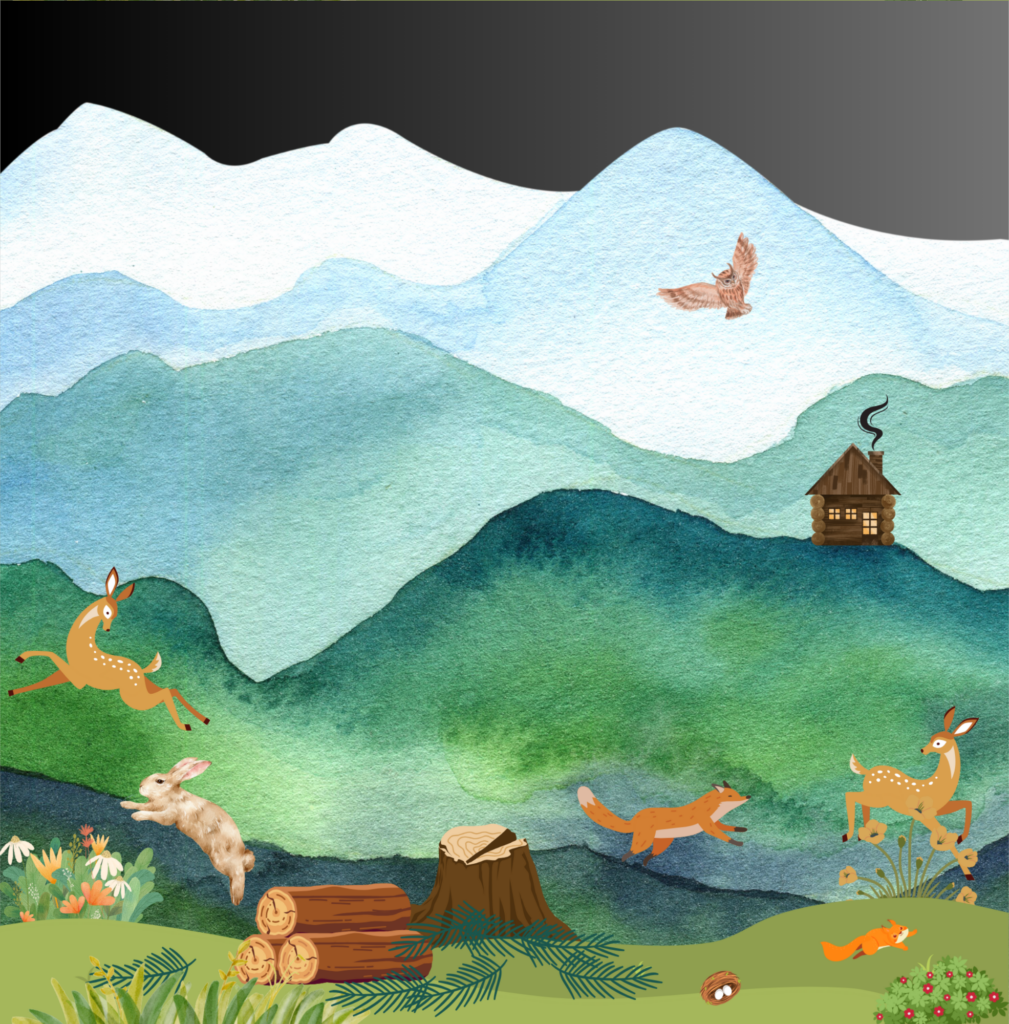For this stage of my free inquiry project, I started shaping the story arc of my wordless picture book. Because my book will not use text, the sequence of images is the main way to guide the reader’s emotions and understanding. Storyboarding allows me to break the book into pages, plan the pacing, and think about how colour, perspective, and symbolism can carry the message.
Learning Goals / Questions for This Week:
The book will be 10 pages long and follow the journey of a single tree as it becomes a home. I want the story to create an emotional progression, first admiration for the tree’s beauty, then sadness when it is cut down, and finally renewal as it transforms into something new while the forest regenerates. This cycle reflects values of sustainability and stewardship, showing that even when resources are used, care and respect for nature allow life to flourish again.
What I Did / Evidence of Learning:
This week, I drafted rough sketches for pages 1–3:
- Page 1: A tall, living tree full of green pine, birds, and sunlight. I used strong horizontal lines in the background to emphasize the tree’s height and rich colour contrasts to show life and warmth.
- Page 2: An unnerving man approaches. Tones change to a muted grey and the animals distance themselves, conveying a sense of upcoming doom.
- Page 3: The tree is no more. I darkened the palette and added startled animals and falling leaves to create a sense of loss.
- Canva book design: From Tree to Home – 8.375 × 8.5in



Here is my early storyboard table, which continues to guide the rest of the book:
| Page | Visual Focus | Intended Effect |
| 1 | A tall, living tree full of rich greens, birds, and sunlight. Bright colours and textures. | Build admiration and connection. |
| 2 | An unnerving man appears while the animals leave. Tones change to a muted grey. | Establishes tension and anticipation. |
| 3 | The tree is cut. Muted colours, startled animals, falling leaves. | Moment of grief, sense of loss. |
| 4–5 | Workers carefully preparing the wood, seedlings visible nearby. | Show respect, avoid waste, extend mood of sadness. |
| 6–7 | Construction of a home begins. Colours brighten, sunlight returns. | Shift mood toward hope and purpose. |
| 8–9 | Saplings sprout around the old stump, children watering plants. | Renewal, new life emerging. |
| 10 | The completed home blends into a healthy forest. Bright, vibrant colours. | Resolution, balance, optimism. |
Connecting to Narrative Theory
To deepen my thinking about how a story moves, I consulted the article “How to Shape a Story: The 6 Types of Story Arcs for Powerful Narratives” from The Write Practice. The article argues that good stories must have rise and fall, not just a sequence of events. It defines several arc types, such as Man in the Hole (fall then rise) which resonates with my idea of loss followed by renewal in my picture book.
Reading this helped me see that my book should emphasize a clear turning point (the tree falling) and a strong climb toward renewal (forest regrowth and home). It also reminded me I can’t just rely on pretty images, each page must move the emotional value of the story, making the dip deeper and the rise more satisfying.
Reflection:
After reading about story arcs, I realize my mid-section, pages 4–6, needs to be more distinct. I need contrast, maybe a darker palette there, to make the later pages feel more hopeful. I’m also trying to decide whether my arc fits one standard type or blends elements like small dips within the main dip.
Next steps:
I plan to sketch pages 4–5 next, exaggerating the emotional shift. I will test darker visuals in that section, then see whether the rise section must be even more vivid to feel satisfying.